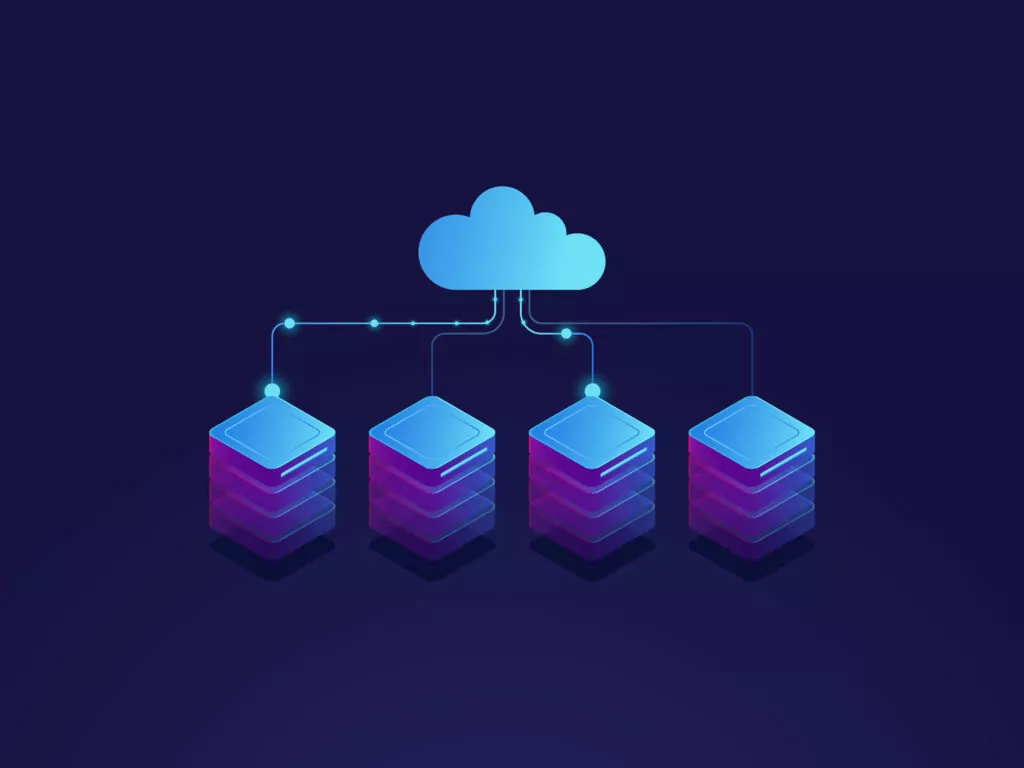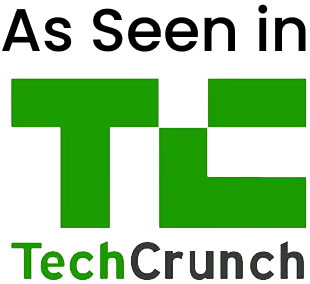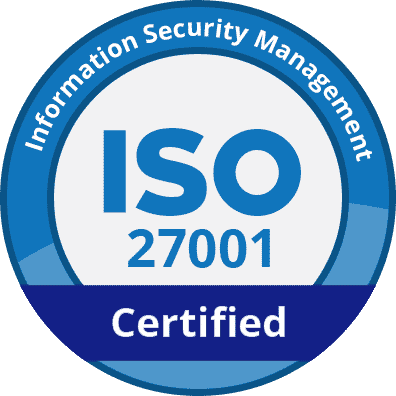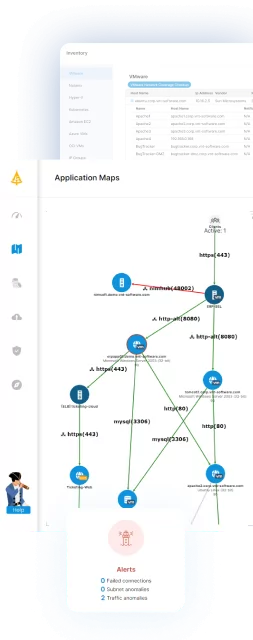What Is IT Asset Management Software
IT asset management (ITAM) software helps organizations track and manage their IT assets throughout their lifecycle. These assets include hardware such as computers and servers, software licenses, and other technology-related inventories.
ITAM software automates asset discovery, inventory tracking, and compliance with licensing agreements, leading to improved oversight and cost savings. It simplifies the process of monitoring asset usage, depreciation, and assignment, reducing the risk of resource wastage.
Another advantage of ITAM software is its capability to improve decision-making in IT departments. With real-time visibility into asset status and availability, organizations can optimize resource allocation and budget planning. Additionally, ITAM systems aid in identifying underutilized or redundant assets, allowing organizations to reallocate or retire them.
Table of Contents
ToggleKey Features of IT Asset Management Software
Asset Discovery and Inventory Management
Asset discovery and inventory management features allow organizations to automatically discover and catalog all IT assets in their network, providing an up-to-date view of all hardware and software. By automating the inventory process, organizations can save time and reduce errors that occur during manual tracking. This is crucial for identifying redundant or underutilized resources.
With precise inventory management, organizations can ensure compliance with software licensing terms and avoid potential legal issues arising from unauthorized use. This also supports strategic asset allocation decisions by providing insights into asset usage patterns and lifecycle status.
Software License Management
Software license management (SLM) helps organizations manage their software licenses, ensuring compliance and avoiding legal pitfalls. SLM tools track software usage, monitor license renewals, and ensure that software deployment adheres to licensing agreements. This feature reduces the risk of non-compliance fines and optimizes software spending by identifying unused licenses that can be re-allocated or terminated.
Additionally, SLM provides valuable insights into software utilization, helping IT managers make informed decisions about software procurement and renewal strategies. By tracking software license expirations and renewals, organizations can prevent service interruptions and maintain continuous operations.
Hardware Lifecycle Management
This feature tracks hardware assets at every stage, providing detailed insights into usage patterns, performance metrics, and depreciation. By managing hardware lifecycles, organizations can optimize maintenance schedules, extend asset lifespan, and plan timely upgrades, resulting in reduced costs and improved operational efficiency.
Hardware lifecycle management also enables decision-making by providing data on the total cost of ownership (TCO) and return on investment (ROI) for each asset. Real-time information on asset health and lifecycle stage helps organizations prioritize capital expenditures and optimize resource allocation.
Automation and Workflow Management
By automating tasks such as asset tracking, license renewals, and compliance checks, ITAM software reduces manual effort and minimizes errors. Automation ensures that processes are consistently applied, freeing up IT staff to focus on strategic initiatives.
Additionally, workflow management capabilities enable organizations to define and enforce procedures for asset procurement, deployment, and retirement. These capabilities ensure that all asset-related actions are routed through predefined approval processes, maintaining control and accountability.
Reporting and Compliance Management
The reporting tools within ITAM software provide detailed insights into asset inventory, utilization, and financial implications, enabling informed strategic decisions. These tools can generate customizable reports to meet various analytical needs and align asset management practices with organizational objectives.
Compliance management tools monitor compliance with licensing agreements and regulatory requirements, mitigating risks associated with non-compliance. By providing real-time visibility into compliance status and potential violations, ITAM solutions allow organizations to implement corrective measures swiftly.
Related content: Read our guide to IT mapping
10 Notable IT Asset Management Software and Tools
1. Faddom
Faddom is a powerful agentless IT asset and application dependency mapping solution that gives IT teams full visibility into their infrastructure in real-time. Unlike traditional ITAM tools, Faddom offers deep insights into how IT assets interact across on-premise, cloud, and hybrid environments, helping organizations optimize resources, prevent shadow IT, and ensure compliance.
With its passive, non-intrusive approach, Faddom eliminates security risks associated with active scanning, making it an ideal solution for organizations with strict security requirements. Deployment takes less than 60 minutes, meaning teams can achieve instant visibility without complex setups.
Key features include:
- Agentless asset discovery: Automatically detects IT assets and their relationships without impacting performance.
- Comprehensive dependency mapping: Visualizes how assets interact, aiding in optimization and risk management.
- Security-first approach: No active scanning ensures minimal network disruption.
- Change impact analysis: Helps IT teams assess risks before making infrastructure modifications.
- Hybrid IT visibility: Covers both on-premise and cloud environments for a complete ITAM strategy.
Schedule a call with our experts to see Faddom in action!

2. IBM Maximo
IBM Maximo is an asset management software solution to optimize the lifecycle of critical infrastructure and equipment. It integrates technologies such as generative AI, IoT, and analytics to simplify maintenance, improve reliability, and improve operational efficiency.
Key features include:
- Integrated asset lifecycle management: Provides tools to manage assets throughout their lifecycle—from procurement to decommissioning. This integration helps organizations ensure that all assets are utilized effectively and maintained for longevity.
- Predictive maintenance: Uses AI and analytics to help organizations predict potential issues before they occur, reducing unplanned downtime and extending asset lifespans.
- Mobile enterprise asset management (EAM): The suite includes mobile EAM capabilities, enabling technicians to perform maintenance tasks on the go.
- AI-powered inspections: Visual inspection tools leverage AI models to monitor the condition of assets. This feature reduces manual effort while providing accurate insights into asset health.
- Operational visibility: Dashboards and reporting tools deliver detailed insights into asset performance, enabling informed decision-making and resource allocation.
Source: IBM
3. ServiceNow IT Asset Management
ServiceNow ITAM is a platform that enables organizations to manage hardware, software, and cloud IT assets from a unified system. By automating the IT asset lifecycle, the platform helps control costs, mitigate risks related to licensing and leasing, and improve asset visibility. It is built on the Now Platform®.
Key features include:
- Software asset management: Modernizes software tracking, allowing organizations to reduce unnecessary spending, ensure compliance, and take action to optimize software usage across their IT environment.
- Hardware asset management: Helps reduce costs and mitigate risks for hardware assets by automating tasks such as tracking, maintenance, and lifecycle management.
- Enterprise asset management: Provides tools to manage both capital and operational expenses (CapEx and OpEx), ensuring full lifecycle automation and risk minimization for enterprise assets.
- SaaS license management: Offers insights into SaaS costs and usage, helping organizations manage subscriptions, optimize licensing, and avoid unnecessary expenditures.
- Asset management executive dashboard: Provides an overarching view of software, hardware, and cloud assets, enabling data-driven decision-making at a strategic level.
Source: ServiceNow
4. SolarWinds Service Desk
SolarWinds Service Desk is a cloud-based IT service management (ITSM) platform that uses AI to simplify IT operations and improve user experiences. It helps IT teams resolve incidents faster, optimize workflows, and align IT services with business needs.
Key Features include:
- Incident management: Automates solution identification, ticket routing, and sentiment monitoring to speed up resolution times. Teams can collaborate in real time through comments and updates, and users can engage across multiple channels, including web, email, Teams, Slack, or mobile apps.
- IT asset management: Integrates asset management capabilities to improve visibility, optimize resource allocation, and ensure compliance. It tracks hardware, software, and other IT assets across their lifecycle, helping organizations reduce costs and improve resource utilization.
- Configuration management database (CMDB): Allows organizations to understand the relationships between their infrastructure and critical business applications. This visibility helps IT teams quickly identify the root causes of issues and plan changes effectively.
- Change management: Provides structured workflows for managing changes, minimizing risks, and ensuring stability. This feature ensures that IT teams can implement changes without disrupting operations.
- Artificial intelligence: AI-powered tools assist agents and end-users by automating service delivery and issue resolution. This capability reduces the workload on IT teams while maintaining service quality at scale.
Source: SolarWinds
5. Asset Panda
Asset Panda is a customizable asset management software to simplify workflows, improve productivity, and provide visibility into asset inventory. The platform enables organizations to track various asset types in a centralized system tailored to their processes.
Key Features include:
- Customizable asset management: Adapts to the organization’s workflows and naming conventions, helping match the way the team works. Its centralized system provides a unified solution for managing diverse asset types.
- Real-time asset visibility: Offers transparency into the asset inventory, including each item’s status, lifecycle history, current depreciated value, repair records, and warranty details.
- Integration capabilities: Integrates with 18+ popular applications, such as ticketing systems and active directories, to unify the data and eliminate silos. Automatic syncing ensures accurate and up-to-date asset records, saving time and reducing duplicate efforts.
- Mobile asset tracking with barcode technology: The mobile app allows users to update asset information from anywhere, helping remote and field teams to stay connected. Built-in barcode technology enables quick asset lookups, simplifies audits, and improves data accuracy without the need for third-party scanners.
- Unlimited users and custom permissions: Supports the entire team with unlimited user accounts and customizable permissions. Organizations can assign appropriate access levels to improve accountability and simplify workflows.
Source: Asset Panda
6. Freshservice IT Asset Management
Freshservice ITAM is an AI-enhanced solution to simplify IT operations by providing visibility into on-premise assets, cloud resources, and SaaS applications. It enables organizations to manage the lifecycle of IT assets, automate routine processes, and optimize costs while improving service delivery.
Key Features include:
- Asset visibility: Provides visibility into the IT infrastructure, covering everything from legacy systems to cloud resources. Supports QR and barcode scanning for easy asset tracking.
- Multi-source CMDB with dependency mapping: Offers a complete view of assets and their dependencies, helping IT teams assess business impact and manage changes. This simplifies root-cause analysis and ensures service delivery aligned with SLAs.
- Unified asset lifecycle management: Automates asset management from procurement to retirement, including onboarding, inventory management, and vendor relationships. Supports lifecycle alerts, bulk updates, and auto-calculates depreciation.
- Inventory and cloud management: Uses discovery tools to maintain an accurate inventory of IT assets, software, and cloud resources. By consolidating this data in a single source of truth, organizations can manage assets more effectively.
- SaaS and software asset management: Offers tools to manage SaaS applications and software licenses, ensuring cost optimization and compliance. Tracks subscriptions, usage, and renewals to prevent overspending and identify underutilized assets.
Source: Freshworks
7. Ivanti IT Asset Management
Ivanti Neurons for ITAM is a solution that centralizes IT asset data, enabling organizations to track, configure, optimize, and manage their assets throughout their lifecycle. With customizable workflows, real-time discovery, and integrations with service management tools, it enables organizations to improve operational efficiency, reduce costs, and mitigate risks.
Key Features include:
- Asset visibility: Provides a view of all IT assets, including hardware, software, cloud, virtual, and server assets, from procurement to disposal.
- Full asset lifecycle management: Tracks assets from procurement through purchase order, deployment, and disposal. Includes tools to monitor lifecycle status, stock levels, location, and warranty details.
- Real-time discovery and automated reconciliation: Automates asset discovery and normalization, pre-populating the asset repository with accurate and actionable data.
- Service management integration: The asset repository integrates seamlessly with Ivanti’s service management CMDB, providing up-to-date asset information for simplified request management.
- Mobile asset management: The mobile app allows users to manage IT assets remotely, enabling actions like searching, updating, and scanning assets on the go.
Source: Ivanti
8. EZOfficeInventory
EZOfficeInventory is an asset management solution to give organizations control over their physical assets while eliminating operational friction. As a central hub accessible anytime and anywhere, it helps organizations track, manage, and optimize their asset inventory.
Key Features include:
- Asset tracking: Monitors the location and custody of assets from acquisition to retirement. Schedule regular audits to ensure accuracy, prevent loss, and keep operations running smoothly with quick and easy asset reservations. Low stock alerts provide round-the-clock inventory availability.
- Mobile access for on-the-go management: The mobile app allows admins and staff to manage assets directly from their phones.
- Automated workflows and asset intelligence: Automates tasks like multi-tier approval processes, recurring maintenance, and repair schedules to maximize the efficiency and lifespan of assets. Asset utilization data and automated insights help organizations optimize their inventory.
- Self-serve request portal: Supports users with an intuitive portal for asset requests and tracking. Centralized control ensures faster request fulfillment and reduced clutter. The portal allows users to submit requests, while admins can review and approve them using the app.
- Customizable dashboards and reporting: Organizations can tailor dashboards with critical asset data to track key performance metrics.
Source: EZOfficeInventory
9. ManageEngine Asset Explorer
ManageEngine AssetExplorer is an ITAM platform to provide visibility and control over IT assets, from procurement to disposal. It simplifies ITAM processes through automated asset discovery, inventory tracking, and lifecycle management. The platform includes tools for software license compliance, purchase and vendor management, and configuration management.
Key Features include:
- IT asset discovery and inventory management: Offers agent-based and agentless methods for discovering and inventorying IT assets in real time. Supports barcode, QR code, and RFID scanners.
- Software and license management: Enables software inventorying, including usage monitoring and reconciliation to detect unauthorized software. Tracks license compliance statuses in real time, supports various license types, and automates tasks like allocation, upgrades, and downgrades.
- Automated workflows and customization: Includes no-code and low-code automation capabilities, allowing IT teams to simplify tasks like notifications, asset assignments, and acknowledgments. Custom workflows and webhooks can address unique needs.
- Visual asset lifecycles: Provides a drag-and-drop interface to design and automate asset lifecycle processes. Each product type can have unique workflows, and automated actions can be triggered at specified lifecycle stages.
- Configuration management database (CMDB): Acts as a single source of truth for enterprise-wide configuration items. Provides business views of services and their dependencies and ensures synchronized data with rule-based syncing between the CMDB and source systems.
Source: ManageEngine
10. Jira Service Management
Jira Service Management is a platform to accelerate collaboration between Dev, IT, and business teams. It enables organizations to manage requests, incidents, changes, and operations, helping teams deliver high-velocity services.
Key Features include:
- Integrated ITSM capabilities: Manages requests, incidents, and changes via a unified platform. Teams can simplify workflows, improve response times, and maintain service quality using Jira Service Management’s ITSM tools.
- AI-powered automation: Automates repetitive tasks and supports interactions to save time and reduce manual effort. AI-powered automation enables faster resolution of tickets and requests.
- Pre-configured templates: Offers pre-configured templates for various use cases, such as IT support, HR, and customer service. These templates include predefined workflows and request types, enabling teams to get started quickly with a setup that fits their processes.
- Collaboration between Dev and Ops teams: Connects development and operations teams to manage changes, incidents, and requests collaboratively. This improves communication for faster resolution of service disruptions.
- SLA management: Helps track and enforce Service Level Agreements (SLAs) with built-in tools to ensure compliance and maintain customer satisfaction. Teams can configure custom SLA metrics, monitor progress, and prioritize tasks.
Source: Atlassian
Related content: Read our guide to IT inventory management
Conclusion
IT asset management software plays a crucial role in optimizing the use of IT resources, ensuring compliance, and simplifying operations. By automating processes such as asset tracking, lifecycle management, and compliance monitoring, these tools help organizations reduce costs, minimize risks, and make data-driven decisions. With features like real-time visibility, workflow automation, and comprehensive reporting, ITAM solutions help IT teams to manage assets across their entire lifecycle efficiently.
Not all IT asset management (ITAM) solutions offer genuine visibility into the interactions of IT assets. Faddom distinguishes itself as the top platform for organizations seeking more than just basic asset tracking. It provides real-time, agentless dependency mapping that improves IT decision-making, enhances security, and promotes cost savings. For companies aiming for comprehensive control over their IT environment, Faddom is the ideal choice!









